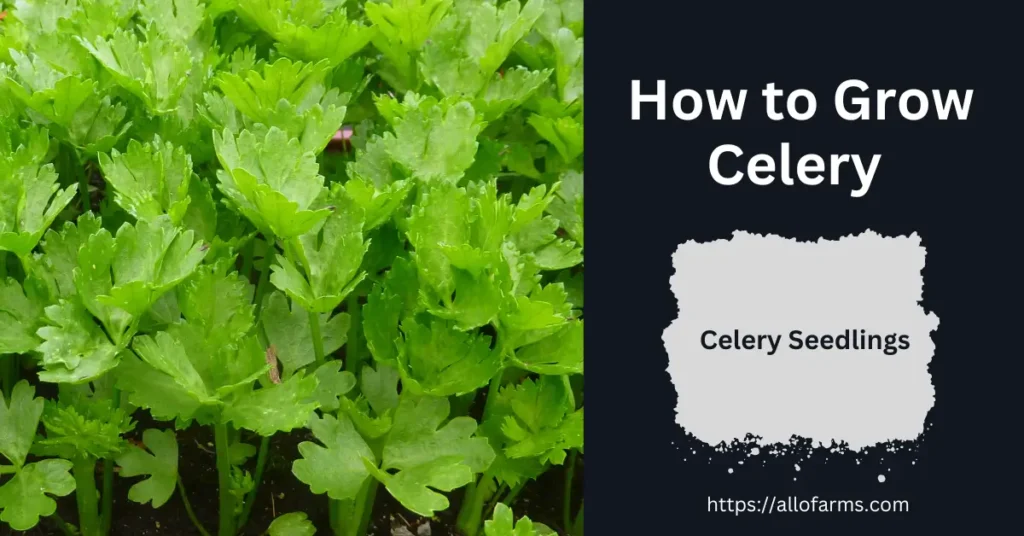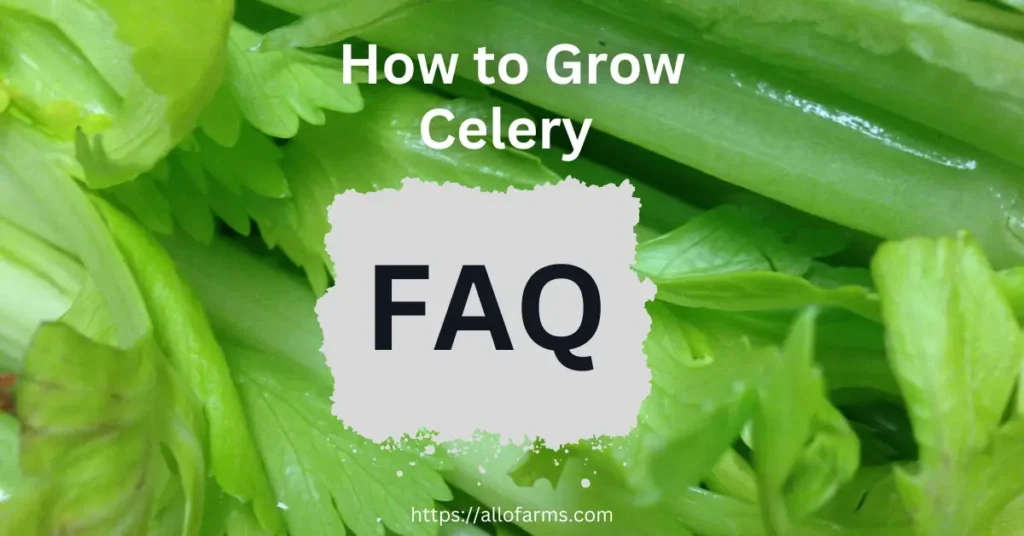In this article, you will learn how to grow celery from seeds. Growing celery from seed is not as difficult as you might think. With a little bit of care and the right conditions, you can grow celery that is just as good as the store-bought stuff.
Celery is a very popular vegetable and is grown for its thick, crunchy and juicy stalks. Although celery is available in grocery stores all year round, home-grown and fresh celery has much better texture and flavor, and of course much healthier than those in grocery stores.
Growing celery is not difficult at all but to get a good yield, there are some a few tricks to take note of and practice.
Table of Contents
Starting Celery Plants From Seeds
A lot of vegetables are started from seeds. Celery is no exception. To start celery seeds, you will need to give the seeds some cold exposure to simulate germination. Soak the seeds in water for at least 12 hours, wrap the seeds up in a wet paper towel.
Put in a plastic bag and loosely fold it up. Place the whole thing in refrigerator for 24 hours, then sow the seeds in potting mix. Keep the soil wet the whole time.
Celery takes long time to germinate, from 2 week up to a month. Please be patient. Celery’s seedlings grow very slowly. After 4~6 weeks, celery will grow about 3~4 leaves.
Because celery’s young seedlings are crowded together, you will need to separate them. Carefully split each plant from the cluster, make sure you get enough roots. Put each young plant into a single cell in seed starter, cover celery’s roots with potting mix.
It takes a long time to grow celery seedlings, so you should start your seeds about two and half months before growing season. Depending on your local weather, celery can be grown as autumn, winter or spring crop.
The good thing is celery seedlings are shade and heat tolerant. Starting in hot summer, keep the seedlings shady and well-watered.
In winter, keep them indoor with some light. The seedlings will just grow fine.
Keep the potting mix wet the whole time and let the seedlings continue to grow.
Transplanting Celery Seedlings

About 4 weeks later, celery will grow 5~6 leaves. It is time to transplant your celery plant into your garden. Add a lot of organic fertilizer, turn over the soil and bury your celery seedling deep.
Fully water your seedlings after transplanting. After transplanting your celery seedlings, celery grows very fast.
Plant your celery about half a foot apart. If you plant them too far apart, the stalks tend to be very thick and short. Also, choose a spot that has shade half of the time during the day away from full sun.
Celery is a cool weather vegetable. The best temperature to grow celery in is between 60 F to 70 F. Temperatures higher than 78F will cause your celery stalks to become tough and hard, making them prone to to diseases.
Temperatures lower than 40 degrees will cause your celery plant to grow very slowly. It is therefore important to choose the right time to plant your celery in your garden.
As far as temperature is appropriate, celery will keep on growing more stalks. The whole plant will become bigger and taller as the days go by.
When the weather gets warmer than 78 degree, celery stalk will get hard and lower its quality. You should remove the plants and keep the space for other vegetables. Just plan your growing in advance and start your seeds in time.
It is important to note that the celery plant consumes a lot of nutrients and needs enough water to support its growth.
Therefore it is important to add plenty of organic fertilizer to your soil before you transplant your celery plant into your garden and also not forgetting watering it well after transplanting.
If necessary, you may need to supplement some inorganic fertilizer. At the early growing stage of your celery plant, nitrogen fertilizer will help celery to grow its first true leaves.
About one month later when it gets into the stalk growing stage, Potassium and Phosphorus together with Nitrogen will make celery grow better quality stalks.
Other than nutrients and water, celery does not need much care. It has fewer bugs and diseases problem compared to other vegetables.
You will see that as the celery plants grow, they grow more leaves covering up the whole area. The stalks grow upright and get thicker and thicker.
Harvesting Your Celery
You can choose to harvest the bigger stems to eat and let the plants continue to grow new stalks. This is advisable so you fully benefit from your celery plants.
When you harvest the bigger stems it makes way for you to get your celery to keep on producing for a long time. If you didn’t plant your celery early and so need to use the same space for the next planting season for a different vegetable, you can harvest the whole plant.
Take your time to enjoy this delicious and healthy vegetable! The best part of celery is the flavorful, young, and crunchy heart.
Frequently Asked Questions (FAQ)- Growing Celery

Q. Can celery be grown from seeds?
A. Yes. You can grow celery from seeds and that is what the article above was about.
Q. What is the best time of year to grow celery from seeds?
A. Celery can be grown as an autumn, winter or spring crop depending on your local weather. All that is needed is to ensure the temperature available for the celery plant ranges between 60 F to 70 F.
Q. How long does it take for celery seeds to germinate?
A. Celery seeds take on average between 2 weeks to a month.
Q. What is the best way to sow celery seeds?
A. Start them in seed starting trays
Q. How should celery seeds be stored?
A. Store celery seeds in airtight plastic bags or containers (such as jar) in a cool, dark and dry place.
Q. How long can celery seeds be viable?
A. Properly stored celery sees can be viable for a maximum of 5 years.
Q. What are the ideal growing conditions for celery?
A. The ideal growing conditions for celery including temperatures between 60 F to 70 F, enough watering and fertilizer, half to a foot plant spacing and spot with shade half of the day.
Q. What pests and diseases affect celery plants?
A. Pests that affect celery plants include carrot flies, slugs, snails, nematodes, and aphids. Diseases that affect celery include early blight, anthracnose or leaf curl disease, pink rot, and powdery mildew.
If you are looking to plant some companion plants with celery, tomato is a great celery companion plant. Check out this article Grow Tomatoes At Home Without Fail (Secret To 8x the results).

